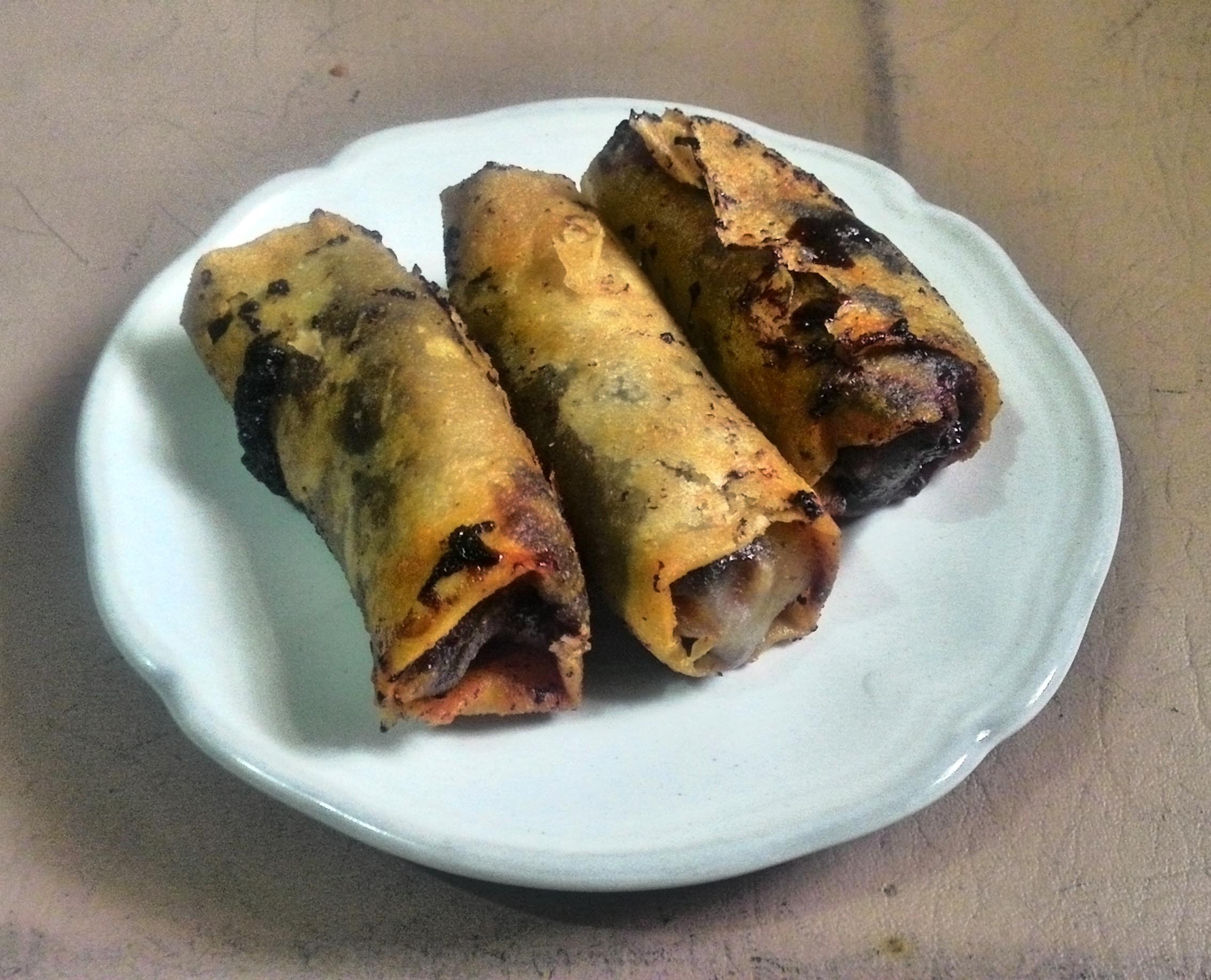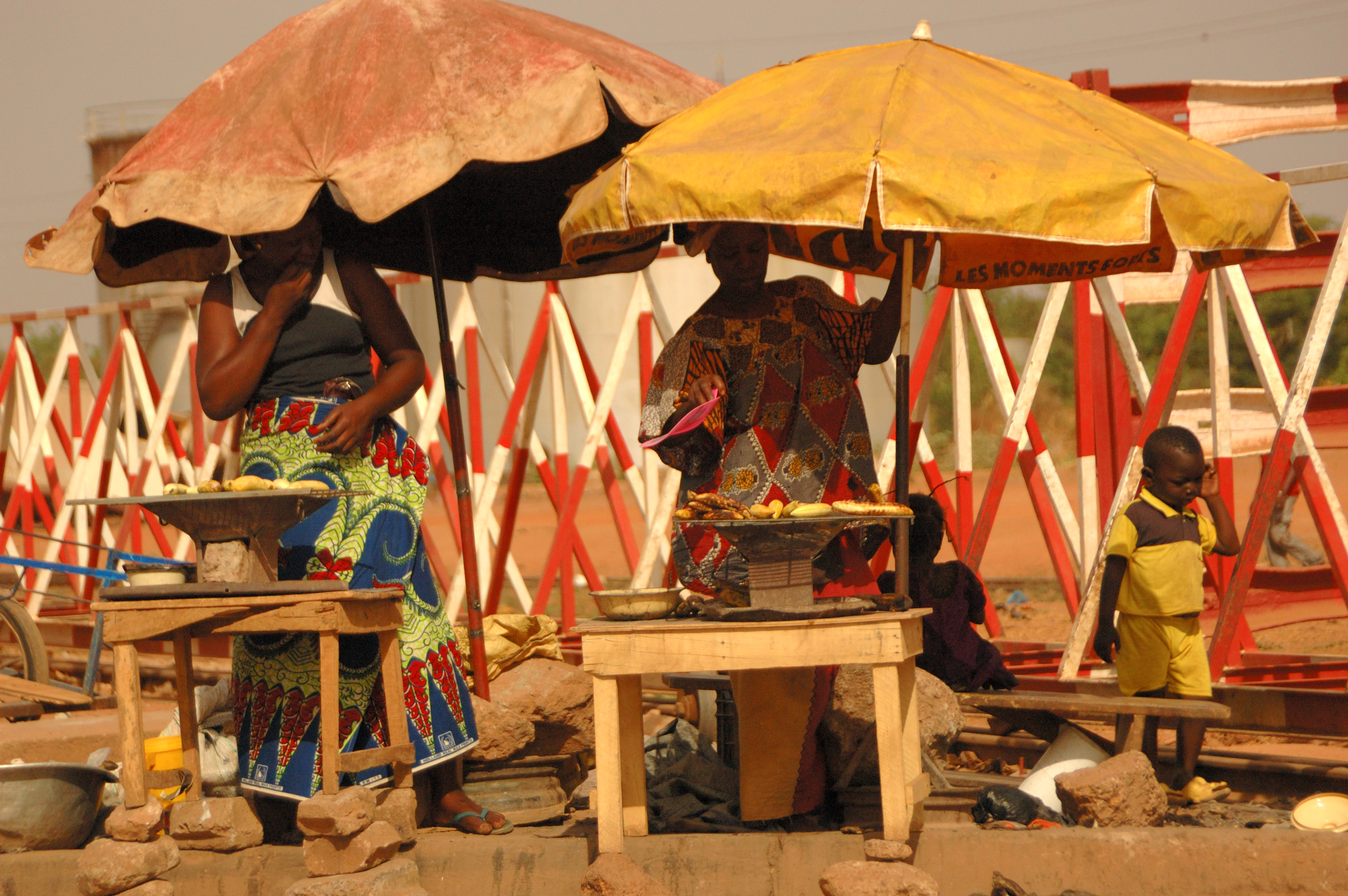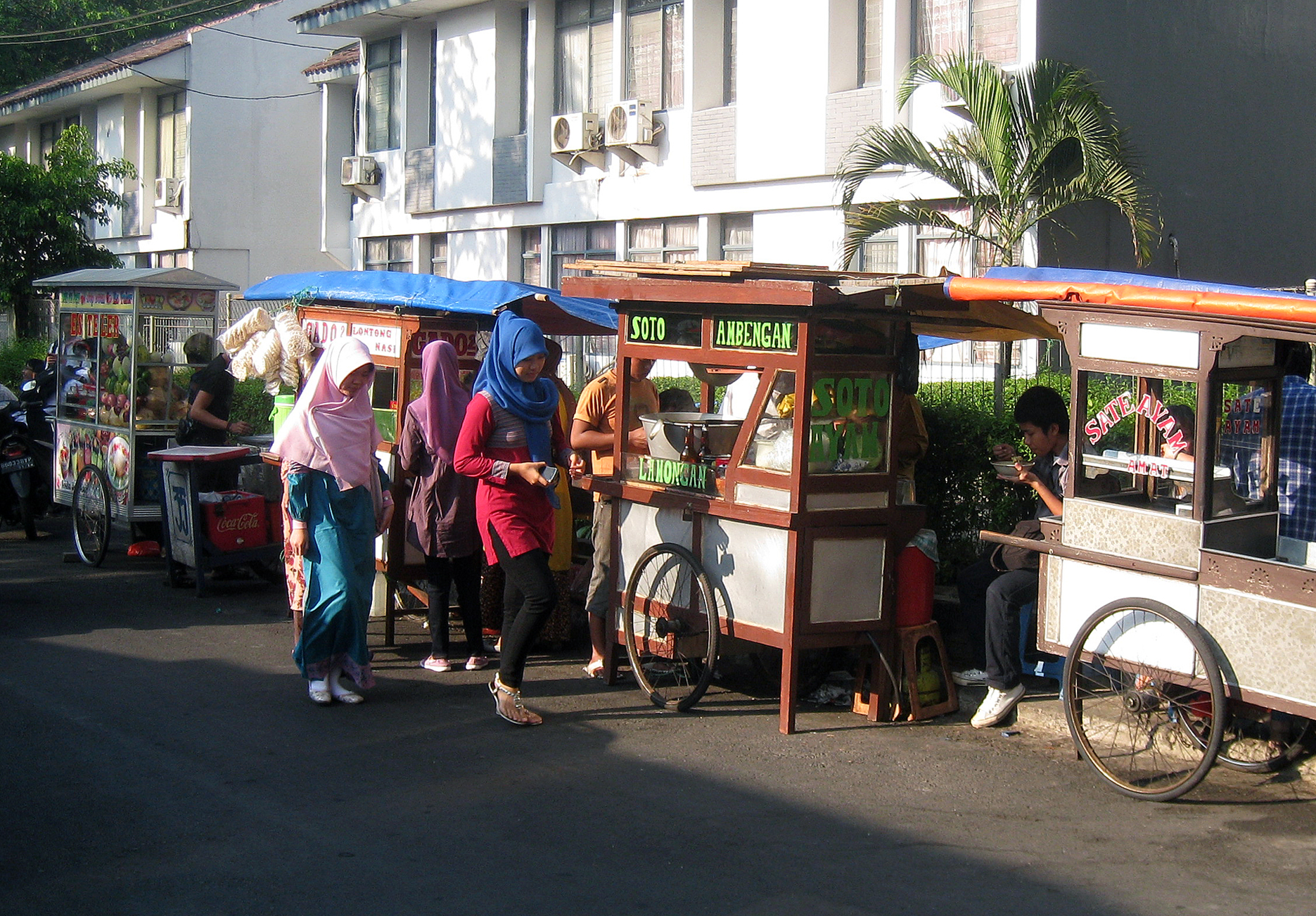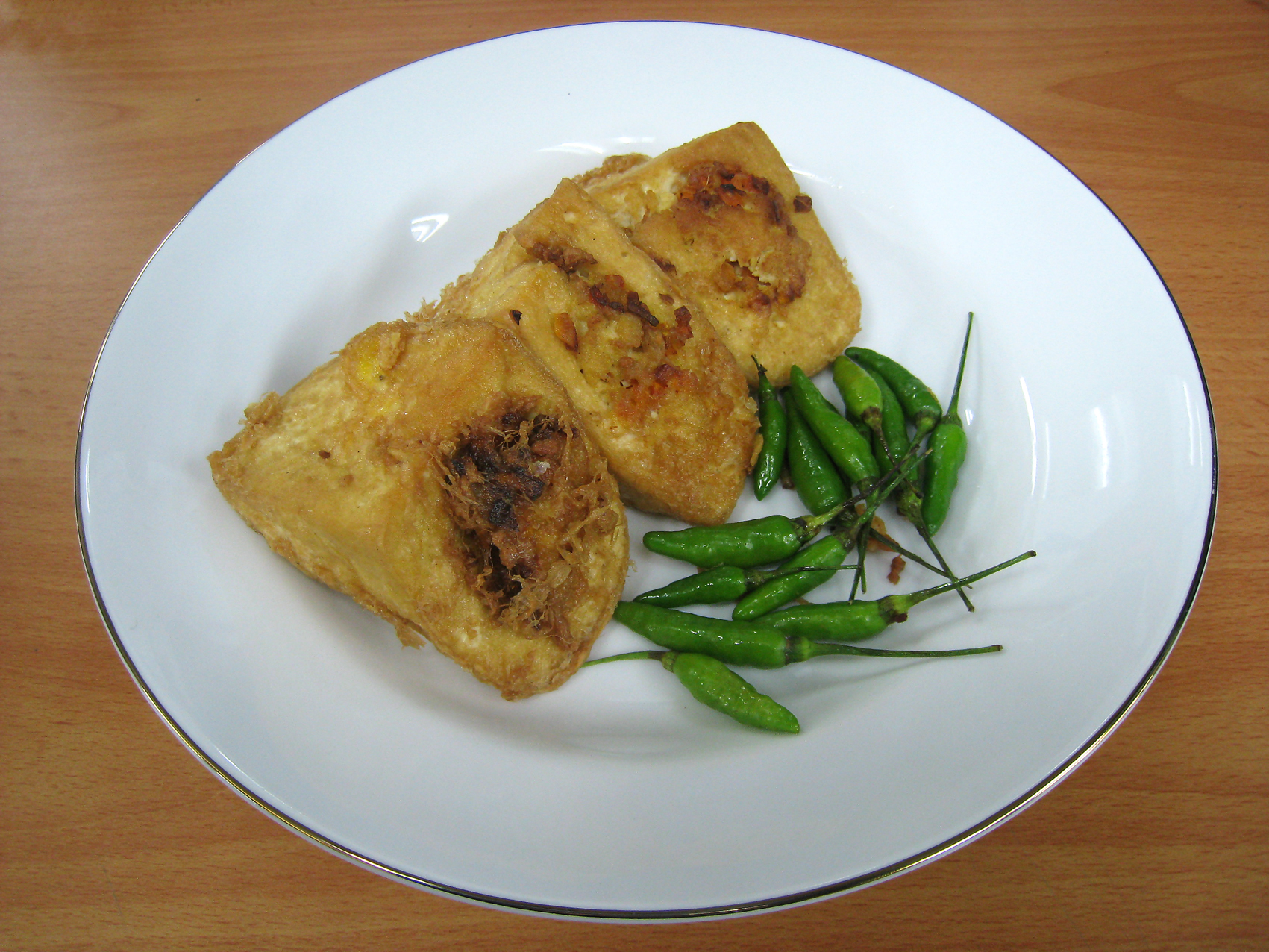|
Piscok 1
Pisang cokelat (''banana chocolate'' in Indonesian language, Indonesian) or sometimes colloquially abbreviated as piscok, is an Indonesian cuisine, Indonesian sweet snack made of slices of banana with melted chocolate or chocolate syrup, wrapped inside thin crepe-like pastry skin and being deep fried. Pisang cokelat is often simply described as "choco banana spring rolls". It is often regarded as a hybrid between another Indonesian favourites; pisang goreng (fried banana) and lumpia (spring roll). The type of banana being used is similar to pisang goreng; preferably ''Musa × paradisiaca, pisang uli'', ''Musa acuminata, pisang kepok'' or ''Latundan banana, pisang raja sereh''. The skin used for wrapping is usually the readily available lumpia skin. In Indonesia, pisang cokelat is regarded as a variant of pisang goreng, and categorized under ''gorengan'' (Indonesian assorted fritters) and sold together with some popular fried stuff; such as fried tempeh, ''tahu goreng'' and ''pisan ... [...More Info...] [...Related Items...] OR: [Wikipedia] [Google] [Baidu] |
Indonesia
Indonesia, officially the Republic of Indonesia, is a country in Southeast Asia and Oceania between the Indian and Pacific oceans. It consists of over 17,000 islands, including Sumatra, Java, Sulawesi, and parts of Borneo and New Guinea. Indonesia is the world's largest archipelagic state and the 14th-largest country by area, at . With over 275 million people, Indonesia is the world's fourth-most populous country and the most populous Muslim-majority country. Java, the world's most populous island, is home to more than half of the country's population. Indonesia is a presidential republic with an elected legislature. It has 38 provinces, of which nine have special status. The country's capital, Jakarta, is the world's second-most populous urban area. Indonesia shares land borders with Papua New Guinea, East Timor, and the eastern part of Malaysia, as well as maritime borders with Singapore, Vietnam, Thailand, the Philippines, Australia, Palau, and India ... [...More Info...] [...Related Items...] OR: [Wikipedia] [Google] [Baidu] |
Latundan Banana
The Latundan banana (also called Tundan, silk banana, Pisang raja sereh, Manzana banana, or apple banana) is a triploid hybrid banana cultivar of the AAB "Pome" group from the Philippines. It is one of the most common banana cultivars in Southeast Asia and the Philippines, along with Lacatan and Saba bananas. Its Malaysian name is ''pisang rastali''. Description Latundan banana plants typically reach a height of 10 to 13 feet. They require full or partial sun exposure. The flowers are yellow, purple, or ivory in color. The fruits are round-tipped with thin yellow skin that splits once fully ripe. They are smaller than the Lacatan cultivar and the commercially dominant Cavendish bananas. They have a slightly acidic, apple-like flavor. Taxonomy In older classifications, the Latundan cultivar was once the plant referred to as ''Musa sapientum''. It has since been discovered that ''Musa sapientum'' is actually a hybrid cultivar of the wild seeded bananas ''Musa balbisiana'' an ... [...More Info...] [...Related Items...] OR: [Wikipedia] [Google] [Baidu] |
Vegetarian Dishes Of Indonesia
Vegetarianism is the practice of abstaining from the consumption of meat (red meat, poultry, seafood, insects, and the flesh of any other animal). It may also include abstaining from eating all by-products of animal slaughter. Vegetarianism may be adopted for various reasons. Many people object to eating meat out of respect for sentient animal life. Such ethical motivations have been codified under various religious beliefs as well as animal rights advocacy. Other motivations for vegetarianism are health-related, political, environmental, cultural, aesthetic, economic, taste-related, or relate to other personal preferences. There are many variations of the vegetarian diet: an ovo-lacto vegetarian diet includes both eggs and dairy products, an ovo-vegetarian diet includes eggs but not dairy products, and a lacto-vegetarian diet includes dairy products but not eggs. As the strictest of vegetarian diets, a vegan diet excludes all animal products, and can be accompanied by ... [...More Info...] [...Related Items...] OR: [Wikipedia] [Google] [Baidu] |
Banana Dishes
A banana is an elongated, edible fruit – botanically a berry – produced by several kinds of large herbaceous flowering plants in the genus ''Musa''. In some countries, bananas used for cooking may be called "plantains", distinguishing them from dessert bananas. The fruit is variable in size, color, and firmness, but is usually elongated and curved, with soft flesh rich in starch covered with a rind, which may be green, yellow, red, purple, or brown when ripe. The fruits grow upward in clusters near the top of the plant. Almost all modern edible seedless ( parthenocarp) bananas come from two wild species – ''Musa acuminata'' and ''Musa balbisiana''. The scientific names of most cultivated bananas are ''Musa acuminata'', ''Musa balbisiana'', and ''Musa'' × ''paradisiaca'' for the hybrid ''Musa acuminata'' × ''M. balbisiana'', depending on their genomic constitution. The old scientific name for this hybrid, ''Musa sapientum'', is no longer used. ''Mus ... [...More Info...] [...Related Items...] OR: [Wikipedia] [Google] [Baidu] |
Indonesian Snack Foods
Indonesian is anything of, from, or related to Indonesia, an archipelagic country in Southeast Asia. It may refer to: * Indonesians, citizens of Indonesia ** Native Indonesians, diverse groups of local inhabitants of the archipelago ** Indonesian women, overview of women's history and contemporary situations * Indonesian language (Indonesian: ''Bahasa Indonesia''), the official language of Indonesia ** Indonesian languages, overview of some of the 700 languages spoken in Indonesia ** Indonesian names, customs reflecting the multicultural and polyglot nature of Indonesia * Indonesian culture, a complex of indigenous customs and foreign influences ** Indonesian art, various artistic expressions and artworks in the archipelago ** Indonesian cinema, a struggling and developing industry ** Indonesian literature, literature from Indonesia and Southeast Asia with shared language roots ** Indonesian music, hundreds of forms of traditional and contemporary music ** Indonesian philosophy, ... [...More Info...] [...Related Items...] OR: [Wikipedia] [Google] [Baidu] |
List Of Banana Dishes
This is a list of banana dishes and foods in which banana or plantain is used as a primary ingredient. A banana is an edible fruit produced by several kinds of large herbaceous flowering plants in the genus ''Musa''. In some countries, bananas used for cooking may be called plantains. The fruit is variable in size, color and firmness, but is usually elongated and curved, with soft flesh rich in starch covered with a rind which may be green, yellow, red, purple, or brown when ripe. The fruits grow in clusters hanging from the top of the plant. Banana dishes * * * * * * * * * s * * * * * * * * * * * Barongko – a Makassar steamed banana mashed with egg, coconut milk, sugar, and salt. It is wrapped in the banana leaf. * * * * * Es pisang ijo * * * * * * * * Kek pisang * * * Kolak pisang * Ledre – a Bojonegoro rolled banana crepe. * * * * * * * * * * * * Pisang epe – a Makassar grilled banana ... [...More Info...] [...Related Items...] OR: [Wikipedia] [Google] [Baidu] |
Fried Plantain
Fried plantain is a dish cooked wherever plantains grow, from West Africa to East Africa as well as Central America, the tropical region of northern South America and the Caribbean countries like Haiti to Cuba and in many parts of Southeast Asia, where fried snacks are widely popular. In Indonesia it is called ''gorengan''. It is called ''alloco'' in Côte d'Ivoire and ''dodo'' in Western Nigeria, otherwise known as simply fried plantain in other parts of Nigeria. ''Kelewele'' is a fried spicy plantain or can be fried as a side dish for Red Red (African stewed black-eyed peas) and fish stew in Ghana. Fried plantain is also eaten in some countries in South America or the Caribbean where African influence is present. For example, in the Dominican Republic, Cuba and Puerto Rico, it is common to cut plantains in slices, fry them until they are yellow, smash them between two plates and fry them again. This is also a common dish in Haiti, referred to as ''bannann peze'', and througho ... [...More Info...] [...Related Items...] OR: [Wikipedia] [Google] [Baidu] |
Banana Cue
A banana is an elongated, edible fruit – botanically a berry – produced by several kinds of large herbaceous flowering plants in the genus ''Musa''. In some countries, bananas used for cooking may be called "plantains", distinguishing them from dessert bananas. The fruit is variable in size, color, and firmness, but is usually elongated and curved, with soft flesh rich in starch covered with a rind, which may be green, yellow, red, purple, or brown when ripe. The fruits grow upward in clusters near the top of the plant. Almost all modern edible seedless ( parthenocarp) bananas come from two wild species – ''Musa acuminata'' and ''Musa balbisiana''. The scientific names of most cultivated bananas are ''Musa acuminata'', ''Musa balbisiana'', and ''Musa'' × ''paradisiaca'' for the hybrid ''Musa acuminata'' × ''M. balbisiana'', depending on their genomic constitution. The old scientific name for this hybrid, ''Musa sapientum'', is no longer used. ''Mu ... [...More Info...] [...Related Items...] OR: [Wikipedia] [Google] [Baidu] |
Piscok 1
Pisang cokelat (''banana chocolate'' in Indonesian language, Indonesian) or sometimes colloquially abbreviated as piscok, is an Indonesian cuisine, Indonesian sweet snack made of slices of banana with melted chocolate or chocolate syrup, wrapped inside thin crepe-like pastry skin and being deep fried. Pisang cokelat is often simply described as "choco banana spring rolls". It is often regarded as a hybrid between another Indonesian favourites; pisang goreng (fried banana) and lumpia (spring roll). The type of banana being used is similar to pisang goreng; preferably ''Musa × paradisiaca, pisang uli'', ''Musa acuminata, pisang kepok'' or ''Latundan banana, pisang raja sereh''. The skin used for wrapping is usually the readily available lumpia skin. In Indonesia, pisang cokelat is regarded as a variant of pisang goreng, and categorized under ''gorengan'' (Indonesian assorted fritters) and sold together with some popular fried stuff; such as fried tempeh, ''tahu goreng'' and ''pisan ... [...More Info...] [...Related Items...] OR: [Wikipedia] [Google] [Baidu] |
Street Food Of Indonesia
Indonesian street food is a collection of ready-to-eat meals, snacks, fruits and drinks sold by hawkers or vendors at '' warung'' food stalls or food carts. Street food in Indonesia is a diverse mix of local Indonesian, Chinese, and Dutch influences. Indonesian street food are usually cheap, offer a great variety of food of different tastes, and can be found on every corner of the city. Most Indonesian street food is affordable, with prices usually less than a US dollar (13,150.80 rupiah). However, there are also some street foods that are priced more than 20,000 rupiah (1.52 US dollar). Indonesian street food often colloquially called as ''kaki lima'' (Indonesian for "five-feet") or ''jajanan kaki lima'' ("five-feet buys"), which refer to five foot way pedestrian pavements along the street that often occupied by street hawkers selling food. In 2015, the Cooperatives, Micro, Small and Medium Enterprises and Trade Agency recorded that Jakarta has around 56,000 street vendors a ... [...More Info...] [...Related Items...] OR: [Wikipedia] [Google] [Baidu] |
Tahu Goreng
Tahu goreng ( Indonesian spelling) or Tauhu goreng (Malaysian and Singaporean spelling) is a generic name for any type of fried tofu dish in the cuisines of Indonesia, Malaysia and Singapore. Preparation When preparing the dish, cakes of hard tofu are deep fried until golden brown. A popular way to serve fried tofu is to cut them diagonally in half and arranged on a plate garnished with bean sprouts, cucumber and scallion. A thick sauce is prepared with shallots, garlic, chili peppers, shrimp paste, soy sauce and tamarind juice. Cultural origins In Malay language and Indonesian; ''tauhu'' or ''tahu'' refers to 'tofu' and ''goreng'' indicates 'fried'. Tofu originated from China and brought to Southeast Asia by Chinese immigrants to the region. Its first arrival in Indonesia is estimated through the Khubilai Khan's army in Kediri at 1292. Fried tofu is consumed extensively in Asian cultures and has found its way into mainstream Western vegetarian diets. Variations Indonesia ... [...More Info...] [...Related Items...] OR: [Wikipedia] [Google] [Baidu] |
Tempeh
Tempeh or tempe (; jv, ꦠꦺꦩ꧀ꦥꦺ, témpé, ) is a traditional Indonesian food made from fermented soybeans. It is made by a natural culturing and controlled fermentation process that binds soybeans into a cake form. A fungus, ''Rhizopus oligosporus'' or ''Rhizopus oryzae'', is used in the fermentation process and is also known as tempeh starter. It is especially popular on the island of Java, where it is a staple source of protein. Like tofu, tempeh is made from soybeans, but it is a whole-soybean product with different nutritional characteristics and textural qualities. Tempeh's fermentation process and its retention of the whole bean give it a higher content of protein, dietary fiber, and vitamins. It has a firm texture and an earthy flavor, which becomes more pronounced as it ages. Etymology The term ''tempe'' is thought to be derived from the Old Javanese , a whitish food made of fried batter made from sago or rice flour which resembles ''rempeyek''. The histori ... [...More Info...] [...Related Items...] OR: [Wikipedia] [Google] [Baidu] |








_3.jpg)